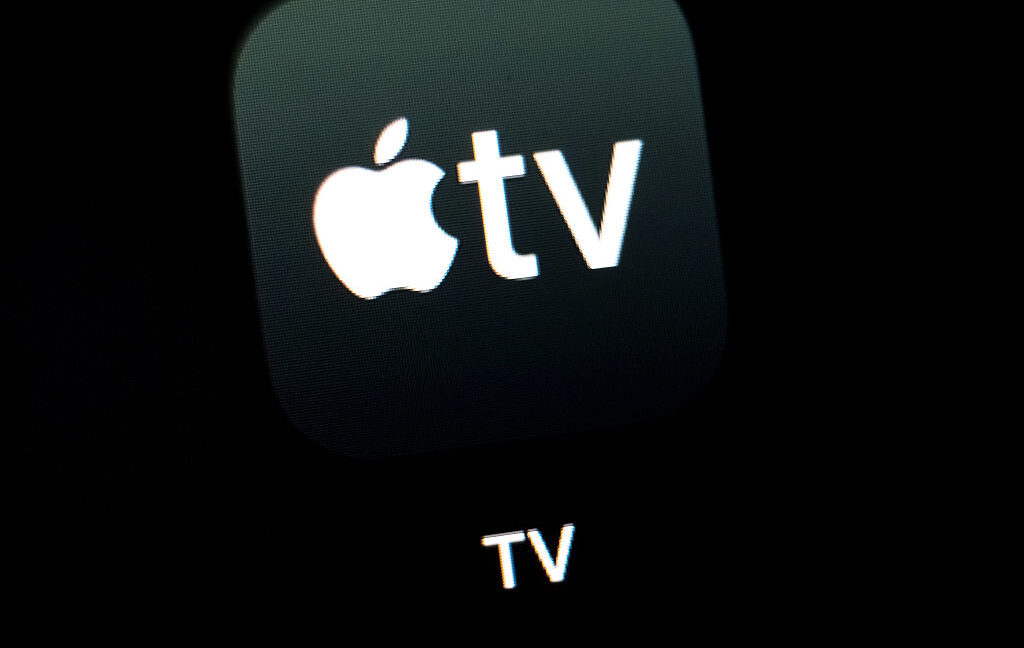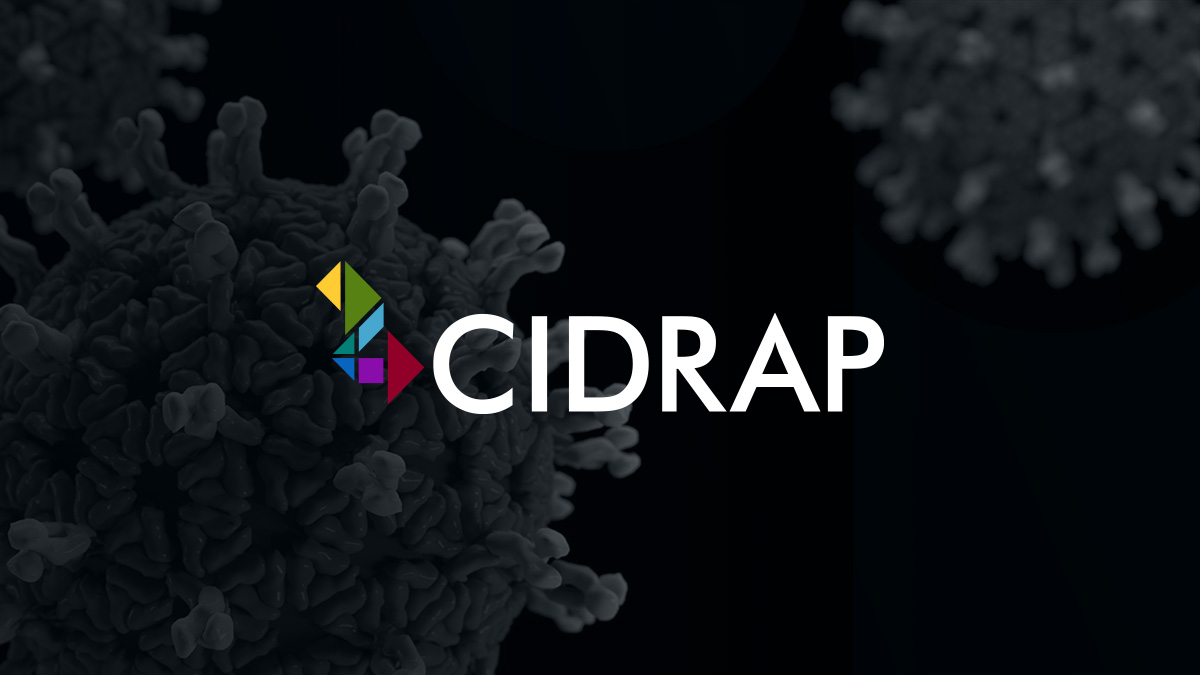In a rarity for Apple’s streaming service, users will be able to buy bundled subscriptions to Apple TV and Peacock for a discount, starting on October 20.
On its own, the Apple TV…

In a rarity for Apple’s streaming service, users will be able to buy bundled subscriptions to Apple TV and Peacock for a discount, starting on October 20.
On its own, the Apple TV…

Barbara Palvin appeared in the Victoria’s Secret Fashion Show on Wednesday, Oct. 15. while recovering from an injury.
The 32-year-old Hungarian model walked the runway in several different ensembles during the night. And although not noticeable…

The event has grown into a truly global affair, with more than 30 countries across six continents…

Biotechnology company Peptilogics announced today that it has completed a $78 million financing round to support a phase 2/3 trial of its investigational treatment for prosthetic joint infections (PJIs).
The upcoming randomized controlled trial will enroll 240 patients beginning in December to determine whether zaloganan, an antibacterial and antibiofilm peptide developed by the Pittsburgh-based company, is superior to the current standard of care for PJIs in reducing clinical failure rates. The trial will also evaluate hospitalization duration, readmission rates, and the need for additional surgical procedures. Failure rates for current approaches range from 15% to 50%.
An estimated 45,000 PJI cases occur in the United States each year, and more are expected as the population ages and the number of knee and hip replacements rises.
Zaloganan works by targeting and disrupting bacterial membranes and has demonstrated broad-spectrum activity against a wide range of pathogens. In a phase 1 trial in patients with PJIs, which are mediated by biofilms from the causative pathogens that grow on implanted hardware, 13 of 14 patients who received zaloganan irrigation during debridement, antibiotics, and implant retention procedures remained infection-free at 12 months.
“Biofilm is the common enemy and the reason why existing standard-of-care surgical interventions fail, even with systemic antibiotics,” Peptilogics CEO Nick Pachuda, DPM, said in the press release. “Zaloganan quickly penetrates the biofilm locally and kills the hiding bacteria.”
Among the investors in the Series B2 financing round is the AMR Action Fund, which was launched in 2020 to help companies developing promising treatments for antibiotic-resistant infections.
“Periprosthetic joint infections are a striking example of how antimicrobial resistance is rapidly undermining modern medicine,” said AMR Action Fund CEO Henry Skinner, PhD. “The financial costs, diminished quality of life, and mortality associated with such infections are frankly unacceptable, and we are pleased to support the Peptilogics team as they advance zaloganan through the clinic and toward patients in need.”
In January the Combating Antibiotic-Resistant Bacteria Biopharmaceutical Accelerator (CARB-X) awarded Peptilogics $3.3 million to develop a slow-release version of zaloganan.

Chimeric antigen receptor (CAR) T-cell therapy is a treatment option for patients with relapsed/refractory diffuse large B-cell lymphoma (R/R DLBCL) after first-line treatment and who are ineligible for autologous hematopoietic cell transplantation (autoHCT). However, access to CAR T-cell therapy remains a challenge. Additional treatment options are still needed, especially for those who are not candidates for CAR T-cell therapy. Epcoritamab (Epkinly; Genmab), a CD20 × CD3 bispecific antibody (BsAb), plus gemcitabine and oxaliplatin (Epcor-GemOx), has been evaluated in the phase 1b/2 EPCORE NHL-2 trial (NCT04663347), and glofitamab (Columvi; Genentech/Roche), a CD20 × CD3 BsAb, plus GemOx, has been evaluated in the phase 3 randomized STARGLO trial (NCT04408638). These 2 regimens provide off-the-shelf treatment options for a patient population that has historically faced low overall and complete response rates of 26% and 7%, respectively.1-3 Herein, we focus on considerations for operationalizing Epcor-GemOx in practice for the oncology pharmacist. Areas of emphasis should include an understanding of optimizing patient selection based on comparative efficacy and safety outcomes with similar regimens, therapy sequencing for R/R DLBCL, and toxicity prevention and management with a thorough program of monitoring, prevention, and early treatment. These are particularly important in the setting of rapid clinical development of these BsAb agents—as clinical use is examined in a growing number of hematologic malignancies—an increasing variety of combination regimens, and earlier lines of therapy.3-11
Study Design and Population
EPCORE NHL-2 is a global, open-label, phase 1b/2 trial investigating epcoritamab-based regimens for treatment of DLBCL and follicular lymphoma in various settings (such as treatment-naive, R/R, and maintenance).3 Arm 5 of the EPCORE NHL-2 trial evaluated Epcor-GemOx for treatment of adult patients (≥ 18 years) with histologically confirmed R/R DLBCL, notably including double- and triple-hit lymphoma with DLBCL morphology. Enrolled patients had to have at least 1 prior systemic therapy and not be candidates for autoHCT due to age, performance status, comorbidities, or previous failure of autoHCT.
Treatment Schedule and Administration
Epcor-GemOx was administered for four 28-day cycles, followed by epcoritamab monotherapy until disease progression or intolerance. Step-up dosing of epcoritamab occurred with cycle 1, and the full dose of epcoritamab was 48 mg. GemOx was administered on days 1 and 15 of cycles 1 to 4. The timing and administration order of medications aimed to maximize efficacy and safety.3,12,13
Key Points
Similar to other BsAb-based regimens, Epcor-GemOx requires premedications for initial doses to reduce the risk of CRS; these include corticosteroids, antihistamines, and antipyretics. Other supportive care that pharmacists should consider includes granulocyte colony-stimulating factor (G-CSF) prophylaxis and infection prophylaxis.3,12-16
Key Points
Anti-infective prophylaxis for viral, fungal, bacterial, or Pneumocystis Jirovecii (PJP) infections was allowed and dependent on patient risk factors; however, PJP prophylaxis is also required per the epcoritamab labeling for standard-of-care practice. For arm 5, the protocol required antiviral prophylaxis for patients with a history of recurrent herpes virus infections, prior herpes infection during a prior line of therapy, or neutropenia and/or a CD4+ cell count less than 200 cells/µL. PJP prophylaxis was mandated if 4 or more consecutive days of corticosteroids were administered (eg, during cycle 1) and for those at an increased risk (eg, patients with a low CD4+ cell count < 350 cells/µL). Prophylaxis for hepatitis B reactivation was mandated if a baseline positive hepatitis B virus core antibody was reported.
In addition to often institution-directed supportive care measures, the EPCORE NHL-2 protocol provided direction on dose reductions and treatment holds. Assessment of complete blood count thresholds and TLS-related laboratory values will impact need for dose modification.3,12,13
Key Points
Prohibited and Restricted Medications
The EPCORE NHL-2 protocol prohibited certain medications during and after treatment, with the aim of limiting undue toxicities. Oncology pharmacists should screen for and advise on prevention of these interactions.3
Key Points
Prohibited therapies:
Use with caution:
Herbal preparations
Efficacy and Safety Outcomes
The primary end point was overall response rate (ORR), which included complete response (CR) and partial response. Secondary end points included complete response rate (CRR), time to response, progression-free survival (PFS), and duration of response. The data cutoff date was December 15, 2023, and median follow-up for efficacy was 13.2 months.
In addition to the efficacy outcomes above, safety was a secondary objective assessed in 103 patients.
Successful implementation of Epcor-GemOx requires close attention to clinical and laboratory assessments. A growing body of consensus guidance, systemic reviews, and retrospective data highlights the importance of early recognition and intervention for infections, CRS, and ICANS associated with BsAb-related regimens.15-18 Robust institutional protocols for toxicity prevention and management should be utilized to achieve this objective.
The STARGLO (Glofit-GemOx) and EPCORE NHL-2 (arm 5) (Epcor-GemOx) trials support regimens that are both used to treat patients with R/R DLBCL who are transplant-ineligible.1,3,19 Factors to consider for treatment selection beyond comparative efficacy and safety outcomes include administration logistics, patient preference, insurance coverage, and enrolled patient characteristics. Some topline differences between the 2 regimens are highlighted in Table 1.20,21
The EPCORE NHL-2 trial demonstrates continued progress in interrogating and improving historically poor outcomes for patients with R/R DLBCL who are transplant-ineligible. With Epcor-GemOx, patients have the option for a regimen with a subcutaneously administered BsAb and that is off the shelf, with promising efficacy end points and tolerable safety outcomes. Oncology pharmacists are well positioned to apply their expertise. Opportunities include, but are not limited to, optimizing patient selection for this regimen, educating on sequencing of therapies, informing builds of evidence-based therapeutic and supportive care plans in the electronic health record, ensuring smooth transitions of care, and limiting safety events by ensuring appropriate monitoring, prevention, and management of toxicities like infections, CRS, and ICANS. This background will ensure that pharmacy teams will continue to lead the rollout and delivery of additional CD20 × CD3 BsAb-based regimens on the horizon with ongoing trials evaluating epcoritamab and glofitamab in frontline management of DLBCL, particularly epcoritamab-R-CHOP (rituximab, cyclophosphamide, doxorubicin hydrochloride, vincristine, and prednisone; EPCORE DLBCL-2 trial; NCT05578976)22 and glofitamab-Pola-R-CHP (polatuzumab vedotin plus rituximab, cyclophosphamide, doxorubicin, and prednisone; SKYGLO trial; NCT06047080).23
This request seems a bit unusual, so we need to confirm that you’re human. Please press and hold the button until it turns completely green. Thank you for your cooperation!

“Cleaner flight is possible, but it requires changing how we think about both risk and return,” Victor said. “We need new institutions, incentives, and partnerships that reward innovation, not just incrementalism.”
The commentary, written by a multinational team of scholars, also highlights a broader lesson for climate policy: global decarbonization goals such as “net zero by 2050” sound bold and ambitious. But when it becomes clear that they can’t be met these goals make it harder to focus on the practical steps needed today to drive change in real-world markets.
Ultimately, the paper argues for action that begins now. By developing better tools to evaluate climate-friendly investments and by rewarding companies willing to take calculated risks on breakthrough technologies, governments, investors and industry leaders can accelerate real progress toward decarbonization.
The paper was co-authored by Thomas Conlon of University College Dublin, Philipp Goedeking of Johannes Gutenberg University of Mainz (Germany) and Andreas W. Schäfer of University College London.
Read the full article, “Mobilizing Capital and Technology for a Clean Aviation Industry,” in Science.
Learn more about research and education at UC San Diego in:
Climate Change

For one week this summer, Taylor and her roommate wore GoPro cameras strapped to their foreheads as they painted, sculpted, and did household chores. They were training an AI vision model, carefully syncing their footage so the system could get…
